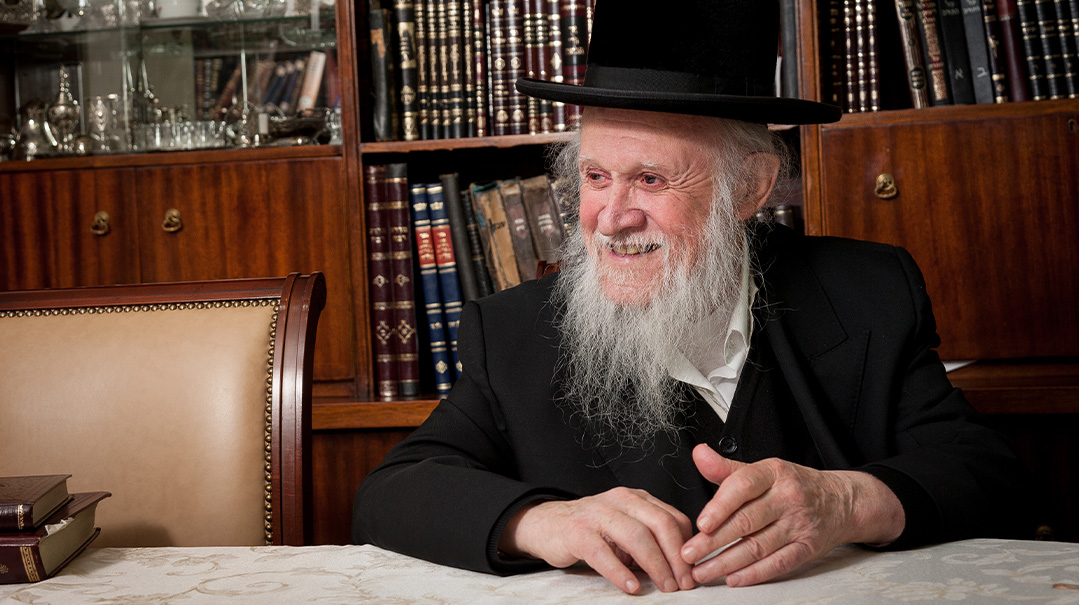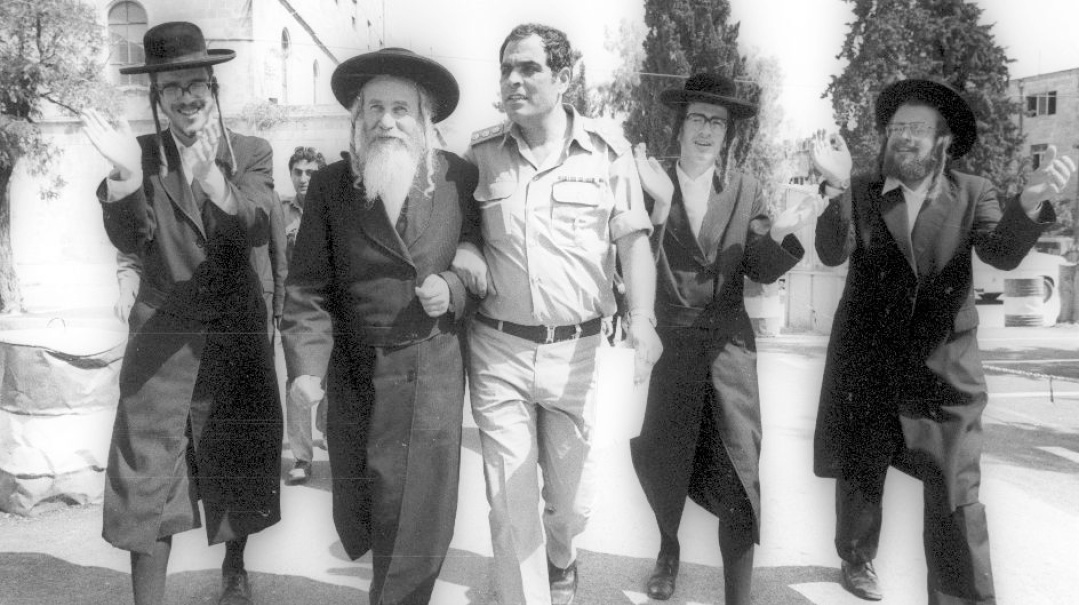Out of the Spotlight
| April 11, 2022Before London, Rav Chanoch Dov Padwa ztz"l spent 15 little-known years in Eretz Yisrael

Photos: Mike Poloway, Mishpacha archives
Say the name “Padwa” and most people envision England — the association between the family and the country is that strong. Preeminent posek Rav Chanoch Dov (Henoch) Padwa ztz”l left an indelible mark on London during his four-plus decades leading the Union of Orthodox Hebrew Congregations before his passing in 2000. But while his name is most readily associated with the British institutions he led and the Kedassia hechsher he presided over, his rabbinical career began earlier, first in prewar Vienna, and then for another 15 years in Yerushalayim.
We’re sitting in Rabbi Shea Heshel Padwa’s modest, seforim-lined dining room in Manchester, but he soon brings us into another world. As a child growing up in Yerushalayim, he attended the legendary Eitz Chaim, where Rav Aryeh Levin was one of the mashgichim, participated in Rav Amram Blau’s youth movement in Meah Shearim, joined the informal Shalosh Seudos gatherings at the Brisker Rav’s home, and visited the Chazon Ish as a prize for joining Yeshivas Hamasmidim. While over 65 years have passed since the family moved to England so Rav Padwa could assume leadership of the UOHC, his son can easily conjure up the memories.
Yerushalayim of the 1940s and ‘50s, when the Padwas lived there, was a different world, poor in materialism but rich in Torah. It was a city where Torah giants not only walked the streets, but invited curious teens inside their homes, willingly sharing their insights along with a spot at their Shabbos tables.
There, in Yerushalayim of old, in the shadows of poverty, personal tragedy, and war, Rav Henoch Padwa learned, raised a family, and grew into a talmid chacham who would provide Klal Yisrael with crystal clarity in so many halachic issues.

Rav Amram Blau might have been a zealot, but his youth movement was always fun and freilech (Photo: Efi Sharir Photography)
Meah Shearim — A World Apart
“I broke the mold, because everyone said you went into Eitz Chaim at age three and came out in a coffin.”
“This is my father’s passport, used for the escape from Vienna, Austria, on April 6th, 1940,” Rabbi Padwa says, showing us a small, worn, grey passport. Inside, there is a picture of his distinguished father, looking very young. There’s also a thick black line. “The black line on this ‘Juden Pass’ is a symbol that the bearer is a Jew, in case anybody might not notice,” he says.
Rabbi Shea Padwa was four years old when the family escaped Vienna for Eretz Yisrael. They traveled by rail to Trieste and left Europe on a boat to Palestine, arriving in Yerushalayim in 1940. The community was tiny, and the two popular chareidi neighborhoods were what was then called Machaneh Yehudah (today’s Nachlaot) and Meah Shearim.
“There was a shortage of rabbanim in Yerushalayim at the time. My father, who had already been a rav in Vienna, was offered a rabbinic position by Rav Yosef Tzvi Dushinsky, the Gavad of the Eidah Hachareidis. It was a small position in Machaneh Yehudah, not much of a commercial proposition, but better than nothing.”
Oops! We could not locate your form.







